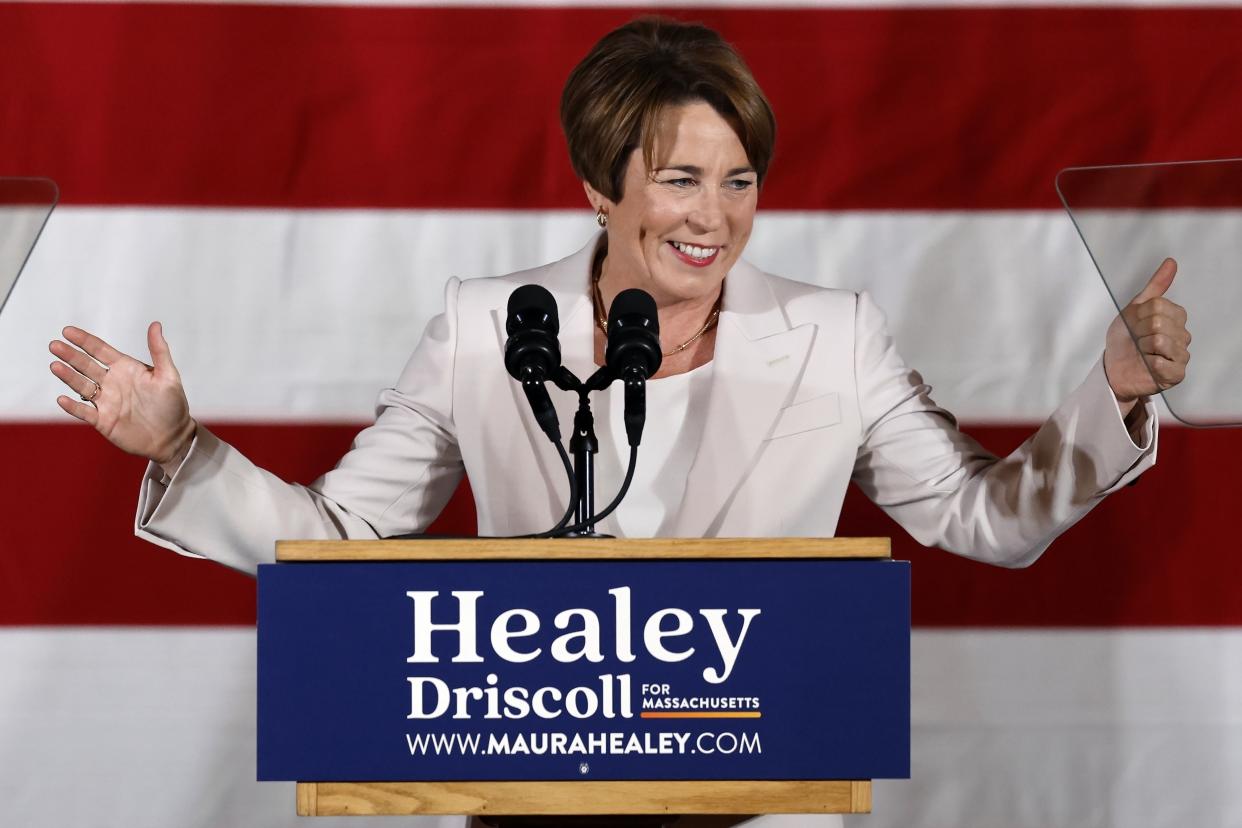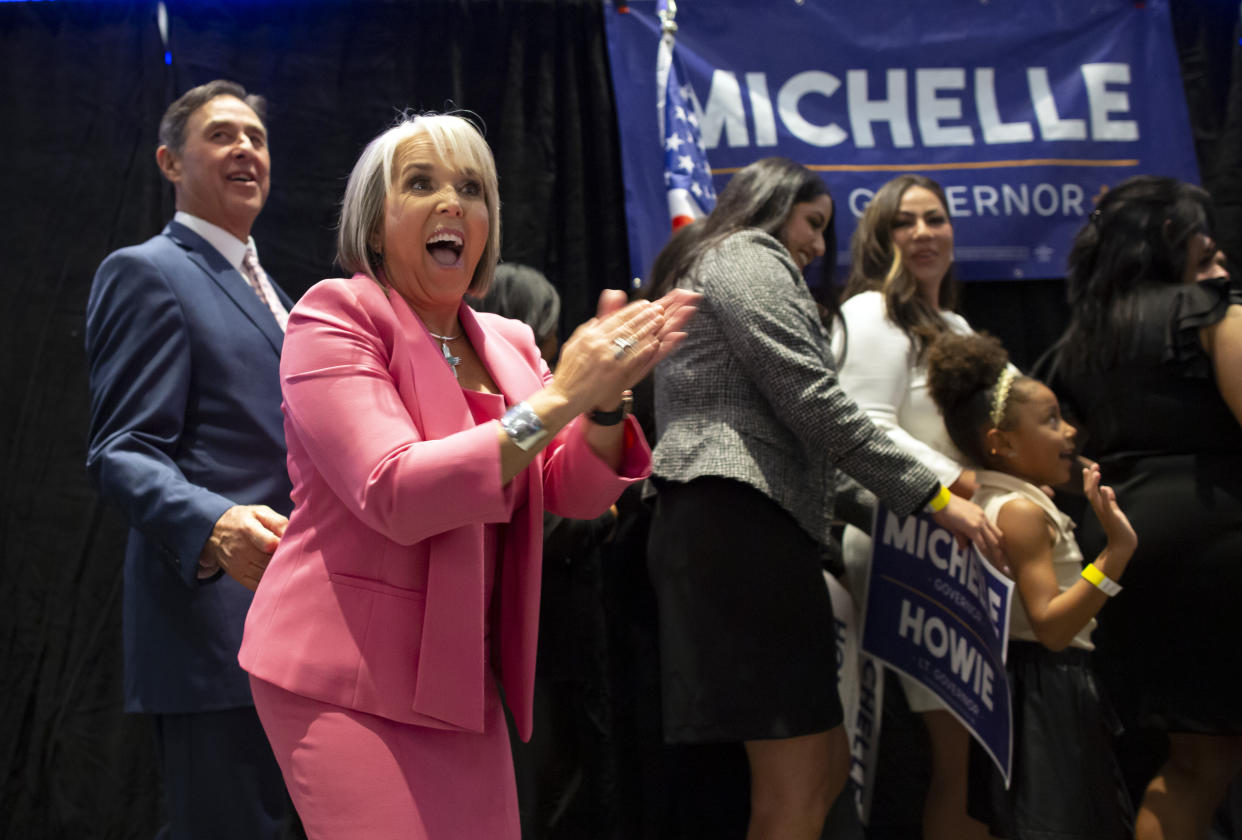A record number of women were just elected governor

Nearly 100 years ago, Nellie Tayloe Ross became the first woman to serve as governor in the United States after she won a special election in Wyoming. Since then, 45 women have served as governors of 31 states, but only nine have held the office at the same time.
In January 2023, a record 12 women will head to, or stay in, governors' mansions across the country.
“Millions of girls from all walks of life will now look at the role of governor, this incredibly important role, differently and see the potential in themselves,” Erin Cutraro, the founder of She Should Run, an organization that inspires women to get on the ballot, told Yahoo News.
In the midterm elections earlier this month, women were reelected in eight states: Alabama, Iowa, Kansas, Maine, Michigan, New Mexico, New York and South Dakota. In Arizona, Arkansas, Massachusetts and Oregon, voters elected new female governors. Arkansas and Massachusetts had never had a female governor before; Massachusetts, along with Oregon, also made history by electing its first openly lesbian governor.
I may be New York’s first woman governor, but I know I won’t be the last. pic.twitter.com/SUIFtthmi9
— Governor Kathy Hochul (@GovKathyHochul) November 9, 2022
Massachusetts Gov.-elect Maura Healey told Yahoo News that she hoped her election would inspire new generations of women leaders.
“I think about what this means for young girls across the country who finally see more leaders who look like them,” Healey said.
“The day after the election, Lt. Gov.-elect [Kim] Driscoll and I visited an after-school program for girls, and it meant so much to see the way their faces lit up when they realized two women will soon be in charge of their state. I hope our victories show them that their potential is limitless,” she added.
Of the 12 women who will serve as governors in 2023, eight are Democrats and four are Republicans. “I'd say the Democratic Party has done a better job than the Republican Party in supporting candidates, supporting gubernatorial females,” said Arizona State University politics professor Gina Woodall. “That's really important.”
Though 24% of governors will be women next year, that share still falls far short of the roughly 50% of the population who are women. There are still 18 states that have never elected a woman as governor, and no state has elected a Black woman to the position.
According to the Center for Women and Politics, women of color represent more than 20% of the population. Only one woman of color was elected as governor in the midterm elections: Michelle Lujan Grisham of New Mexico, a Latina, who was elected to a second term.
This lack of diversity can have real-world impacts. Cutraro of She Should Run called the issue a “crisis" for policymaking.

“If you don't have a reflective government, that means that there are voices that are invisible to the policymaking process. Look at the United States Senate, we don't even have a Black woman.” Cutraro said.
Woodall told Yahoo News that the new class of women governors may also pursue different political priorities and strategies than their predecessors did.
“We know through research that women in general have different policy priorities than men do. They tend to favor policies that help and protect children, that help and protect victims of domestic violence, and that protect safety net programs,” she said.
Cutraro agreed. “Research is very clear on the ability for women to govern differently — to be more collaborative, to bring those issues that they have uniquely experienced as women, and to connect differently,” she said.
Advocates hope the recent success of women running for executive positions will lower the barriers for coming election cycles. Kelly Ditmar, the director of research at the Center for American Women and Politics, pointed to Georgia’s Stacey Abrams, who mounted a high-profile but unsuccessful bid to be the country’s first Black female governor this year.
“We hear from the women who do run, like Stacey Abrams, that they not only have to campaign and prove that they're the best candidate, they also have to convince people that they can even win,” Ditmar said. “Full representation across the board requires us to keep our foot on the gas.”

